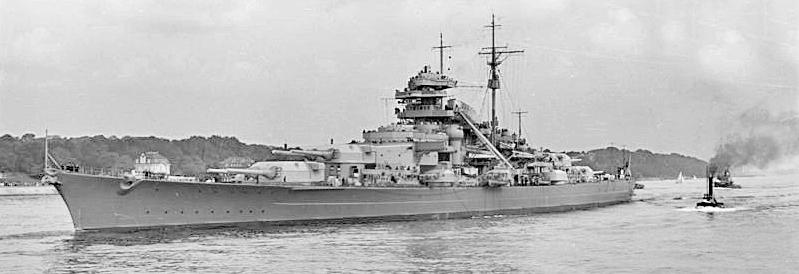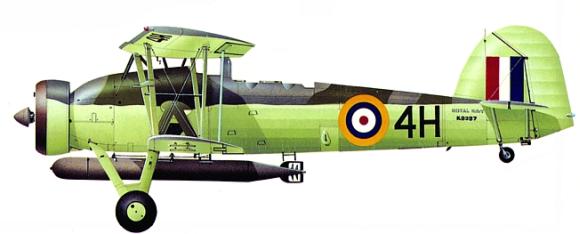
Bismarck
On the evening of May 26, 1941, eighty years ago today, a squadron of obsolete biplanes flown by volunteer pilots succeeded in crippling the Bismarck, the mightiest battleship in the German Kriegsmarine. A revised repost.
The Bismarck was about to escape to the safety of Brest in occupied France. Two days before, in the Battle of Denmark Strait, the German battleship sank the British battle cruiser HMS Hood in six minutes. Then, after a chase of several days, pursued by a large British flotilla, the Bismarck was about to get away.
On the stormy evening of May 26, in heavy seas and only an hour’s worth of daylight left to stop the German ship, a squadron of fifteen Fairey Swordfish biplanes was launched from the carrier HMS Ark Royal. The pilots of the Swordfish biplanes were all members of the Royal Naval Volunteer Reserve, a corps of civilian volunteers who served alongside Royal Navy and Royal Navy Reserve personnel. The wavy stripes on RNVR officers’ sleeves differentiated them from RN/RNR officers, and gave the group the nickname, the “Wavy Navy.”
The “Wavy Navy” pilots were flying lumbering biplanes which were considered obsolete by many when they first came off the assembly line in 1936. They had a metal frame but were covered in a skin of canvas. They had open cockpits, fixed wheels, were terribly slow, and carried two machine guns which one pilot described as “one stage above the bow and arrow.” Early on, they earned the nickname “stringbag,” because, like a shopper’s stringbag, they could carry almost anything. On May 26, 1941 the stringbags each carried a torpedo.
Despite their shortcomings, as bi-planes the Swordfish stringbags could take off in a very short space, which made them perfect for the small flight decks of the aircraft carriers of the day. They were also remarkably rugged, able to survive carrier landings and enemy bullets which passed cleanly through their canvas skins.
 The squadron of 15 stringbags attacked the Bismarck at almost wave top level despite heavy anti-aircraft fire. Two torpedos struck the ship. The first hit near amidships in an area of heavy armor and did minor damage. The second struck the stern and jammed the Bismarck’s rudders.
The squadron of 15 stringbags attacked the Bismarck at almost wave top level despite heavy anti-aircraft fire. Two torpedos struck the ship. The first hit near amidships in an area of heavy armor and did minor damage. The second struck the stern and jammed the Bismarck’s rudders.
All planes returned to the Ark Royal and only one pilot and one gunner were wounded.
The next day, with the Bismarck unable to maneuver, she was battered by shells from her British pursuers and was ultimately scuttled by her crew.
Despite being considered obsolete, the Fairey Swordfish remained in service through the end of the war and sank more tonnage than any other Allied plane during World War II.
In 1958, the Royal Naval Volunteer Reserve, the Wavy Navy, was merged into the Royal Naval Reserve.

Fairey Swordfish: cheap, simple and effective. The only bit of modern tech they need is remote control.
For those who like a pun I suggest we call this modern version the Fairy Nuff. 🙂
See – https://twitter.com/RoyalNavy/status/1397598510409822216
The computerised German fire control could not cope with the slow speed of the Swordfish.
The gunner called the troughs so that the torpedo launched into the back of a wave otherwise it would trip over itself.
After that they had to find their way back with no GPS or automatic navigation.
Just another day at the office for true heroes.